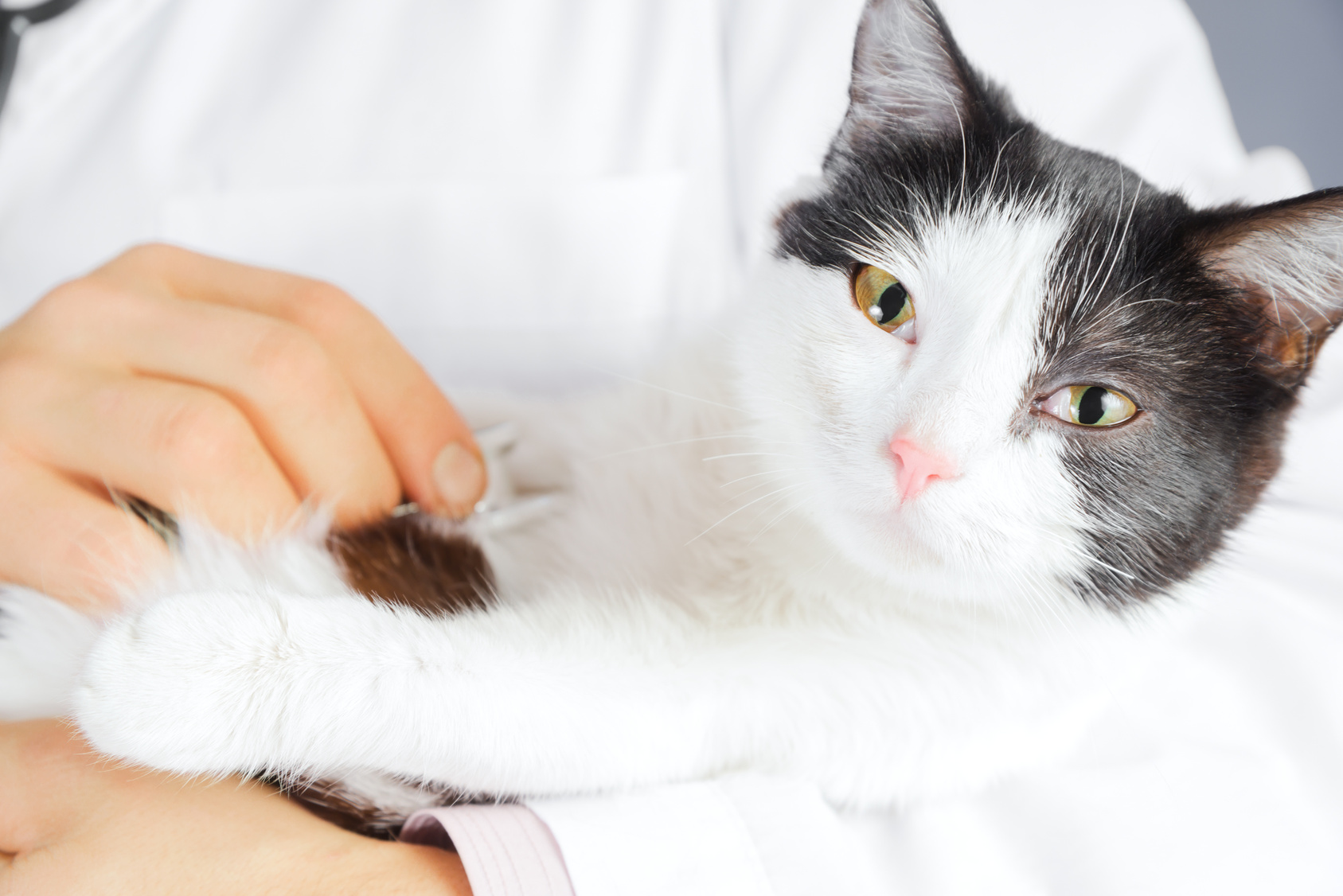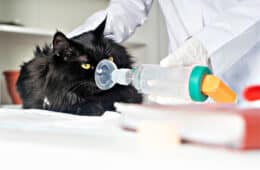Welcoming a new litter of kittens can be one of life's most rewarding experiences, especially when you're able to walk this journey with your beloved feline friend.
But along with the joy and anticipation, the process of cat pregnancy also brings a fair share of questions, concerns, and new responsibilities.
You might wonder: How long will my cat be pregnant? What changes should I expect? And most importantly, how can I ensure the best care for my furry friend during this crucial time?
Welcome to "Cat Pregnancy: Your Essential Roadmap to Feline Motherhood".
In this comprehensive guide, we're here to demystify the process of cat pregnancy, from understanding the reproductive cycle and decoding the signs of pregnancy to providing the best prenatal care.
It's more than just a glimpse into the fascinating world of feline reproduction - it's about ensuring that you're equipped to provide a nurturing, loving environment for your cat and her future kittens.
Whether you're a first-time cat parent or a seasoned pet lover, join us on this exciting journey, where we'll discover together the delights and duties of feline motherhood.
Let's embark on this remarkable adventure into the heart of cat pregnancy, a journey filled with purrs, pawprints, and profound love.
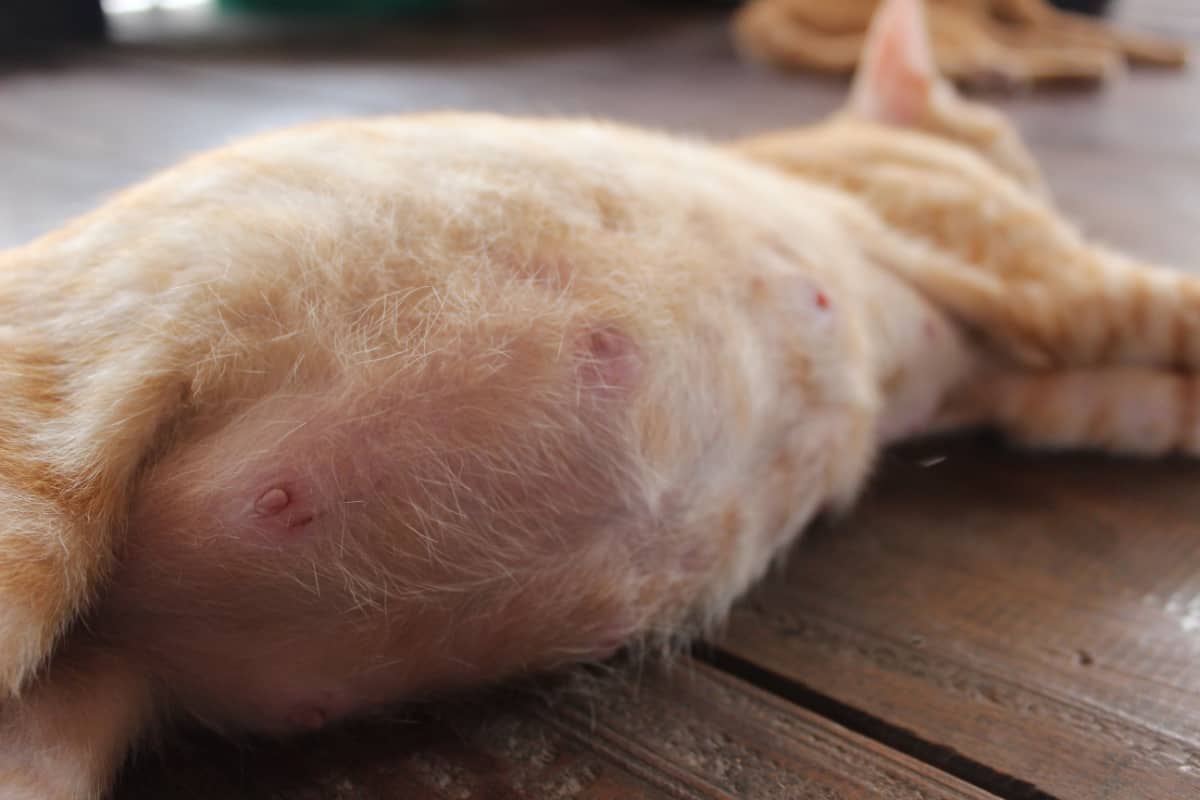
Understanding Feline Pregnancy: An Introduction
Cat pregnancy, a natural yet fascinating process, is marked by significant physiological changes and behaviors in your feline companion.
This miraculous journey, from the earliest heat cycle to the arrival of a litter of kittens, requires your understanding and care.
A deep awareness of what cat pregnancy entails not only equips you with essential knowledge but also strengthens the bond you share with your pet.
Pregnancy in cats, similar to other mammals, is a complex process that involves numerous stages, including the heat or breeding cycle, fertilization, gestation, and ultimately, birth.
Each stage has its unique signs and challenges, and as a responsible pet parent, you need to be attuned to these changes to ensure the well-being of your cat and her kittens.
Let's dive into the first stage of feline pregnancy: The reproductive cycle.
Entering The First Stage: The Female Cat's Reproductive Cycle
Cats are polyestrous, which means females can have many heat periods in each breeding season. Each heat period lasts between 5-14 days. If she is mated, the cat will usually go out of heat within 24 hours.
The breeding season in the Northern Hemisphere is during the months of late winter and early spring (March-September).
Indoor cats or cats living in warm climates can go into heat and become pregnant more than once during the breeding season.
When in heat, the cat may display several signs. These may vary between breeds and even between individual cats. Signs include the famous calling (loud meowing), increased appetite, and restlessness.
Many cats begin to roll on the floor and demand to be petted. Some cats may begin to spray urine around the house.
The Persistent Cycle: Dealing with a Cat in Heat
If the cat is not mated and does not become pregnant, she can go into heat repeatedly every 2-3 weeks. This means that if your cat goes into heat, you can't simply keep her locked up at home, waiting for it to go away.
Unless you spay the cat, she will keep going into heat practically every month.
And so begins the journey of cat pregnancy. But what follows the heat cycle?
Let's cover the details of the gestation period.
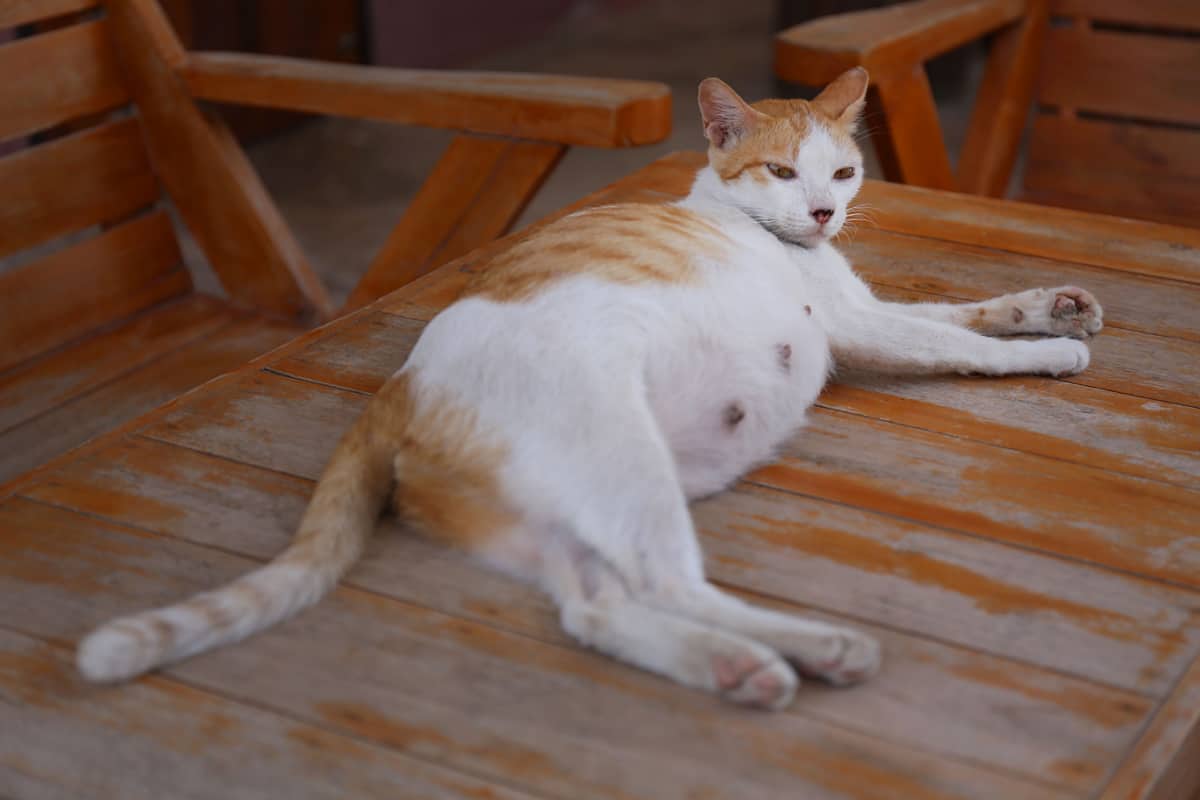
Transitioning To Pregnancy: The Gestation Period
Moving forward from the reproductive cycle, the next significant phase in feline pregnancy is the gestation period.
It is during this time that kittens develop inside the mother, marking a crucial phase in the lifecycle of felines.
Typically, the gestation period for cats, or the duration of pregnancy, lasts between 63-65 days. However, this period isn't set in stone and can vary among different cat breeds.
A fluctuation within the range of 58-70 days is considered normal and not a cause for concern.
Recognizing Pregnancy: Identifying the Early Signs
But how can you tell if your feline friend is pregnant? As early as the second or third week into the pregnancy, some signs will start appearing.
One of the most noticeable changes is in the cat's nipples, which become enlarged and change color to a deeper pink.
This phenomenon is known as 'pinking-up' and is often the first visual clue of a cat's pregnancy.
As the pregnancy advances, other signs, such as a visibly growing abdomen, become more apparent. While these physical changes can indicate pregnancy, it's important not to rely solely on them.
False alarms can occur, and some cats may show similar symptoms due to other health issues.
To ensure the well-being of your cat and confirm pregnancy, it is essential to visit a vet.
At the prenatal check-up, your vet can definitively confirm the pregnancy using methods like ultrasound or other specific tests.
This appointment also allows your vet to establish a timeline for future check-ups and necessary tests during the pregnancy, ensuring that your cat gets the best care possible throughout her gestation period.
By understanding these critical aspects of the gestation period, you're better equipped to care for your pregnant cat, ensuring a safe and healthy pregnancy journey.
In the next section, we will discuss the special care required by cats during this fascinating period.
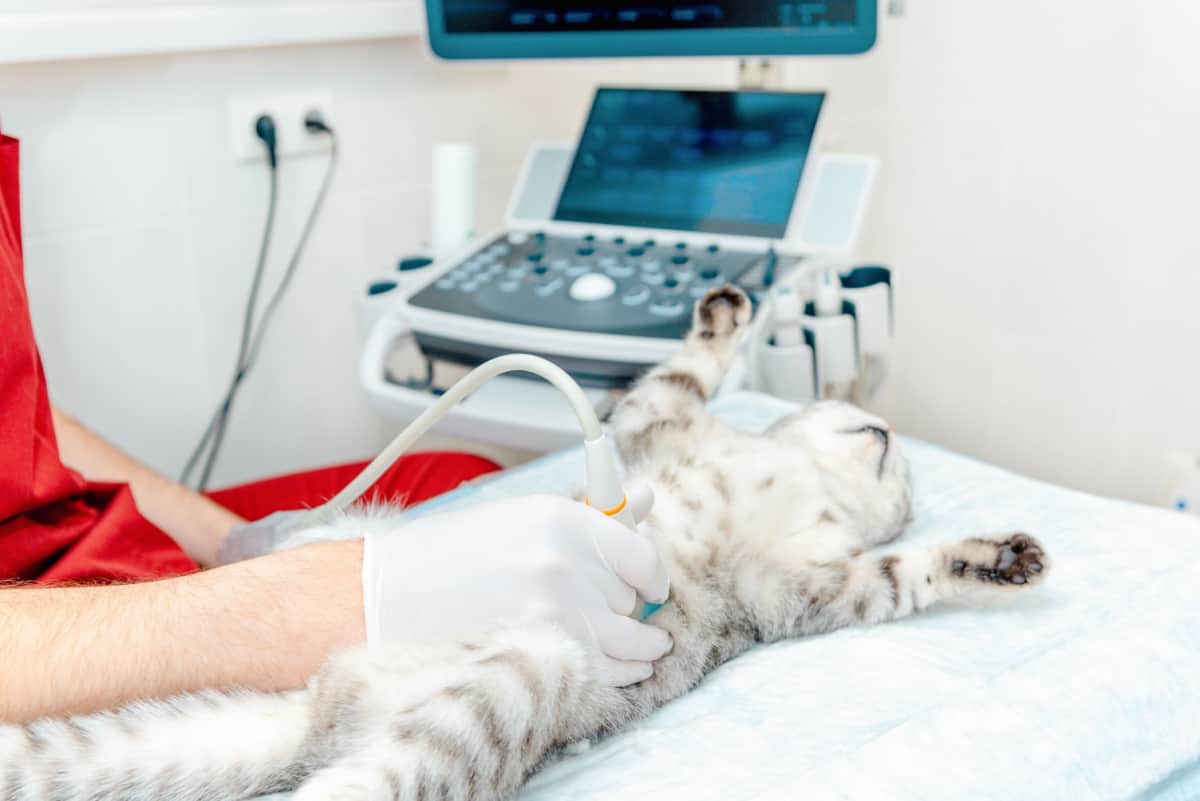
Proper Care for a Pregnant Cat: Nutrition and Medication
Nutritional Needs During Pregnancy
Venturing deeper into the stages of feline pregnancy, it's vital to highlight the unique care that pregnant cats require.
While they are remarkably resilient and often don't need excessive pampering, there are a few areas where your careful attention can ensure the health and well-being of both the mother cat and her kittens.
One such area is nutrition. The nutritional requirements of a pregnant cat increase significantly, especially as she gets closer to her delivery date.
In order to support the developing kittens and maintain her own health, she will need a diet rich in essential nutrients, especially protein and calcium.
Therefore, it's advisable to switch to high-quality kitten food or food specifically designed for pregnant and nursing cats, which will meet these increased nutritional demands.
SIGN UP FOR THECATSITE'S EMAIL UPDATES >
Managing Appetite Fluctuations
Despite the increased nutritional needs, your cat may experience fluctuations in appetite due to hormonal changes.
Nausea, similar to morning sickness in humans, can affect cats in the middle stages of pregnancy. This can result in a decreased appetite or even complete food refusal.
While this is typically a temporary phase and not a cause for alarm, keeping a close watch on your cat's food intake is essential.
If she stops eating for more than a couple of days, or if you notice a decrease in appetite for more than 3-4 days, it's time to seek veterinary advice.
Your vet can assess her condition and prescribe appropriate solutions or treatments if required.
Medication Considerations
This brings us to the subject of medication. During pregnancy, it's crucial to remember that certain common and seemingly harmless drugs can be harmful, or even fatal, to the unborn kittens.
Therefore, you should never medicate your cat during her pregnancy unless specifically instructed to do so by your vet.
Even if you only suspect that your cat may be pregnant, it's crucial to let your vet know before any drugs are prescribed.
The risk of harm to the kittens is greatest in the early stages of pregnancy, so keeping your vet informed can help prevent any unintentional harm.
Through careful attention to these areas, you can provide your pregnant cat with the special care she needs.
Setting the Stage: Preparing for the Arrival of Kittens
The delicate dance of cat pregnancy reaches its crescendo with the arrival of the kittens.
As the due date approaches, it's essential to prepare a welcoming, safe environment and be ready to assist in case of complications. Let's walk through the key considerations.
Firstly, setting up a comfortable and secure birthing area for your cat is paramount.
This area, often referred to as a "nest," should be in a quiet, low-traffic part of your home, away from noise and activity.
Use a large box with low sides that the mother cat can easily climb in and out of, but high enough to contain the kittens once they begin exploring.
Line the box with soft, warm blankets or towels that you don't mind getting dirty, as the birthing process can be messy.
In addition to the nest, ensure the mother cat has easy access to fresh water, food, and a litter box in the same area. Providing these essentials will allow her to stay close to her kittens and minimize stress.
Recognizing Signs Of Impending Birth: What To Look Out For
Recognizing signs of impending birth is also crucial.
As the delivery date nears, your cat may show signs such as nesting behavior, restlessness, decreased appetite, and increased grooming, especially around the genital area.
She may also begin producing milk a few days before birth.
Anticipating Complications: Understanding the Birth Process
Understanding the birth process and being aware of potential complications are equally important.
Normally, cats are quite capable of handling birth on their own. However, being observant during the birthing process can help you detect any complications early.
Signs of complications could include excessive crying or discomfort, more than two hours of straining between kittens, or a lack of progress after several intense contractions.
In any of these cases, it's essential to reach out to your vet immediately.
Remember that while the process may be messy and, at times, stressful, it's also a natural part of life and, for the most part, will progress smoothly.
Preparing for the arrival of the kittens not only means setting up the right physical environment but also mentally preparing for the magical moment of birth.
It is a transformative experience, an instance of life coming full circle.
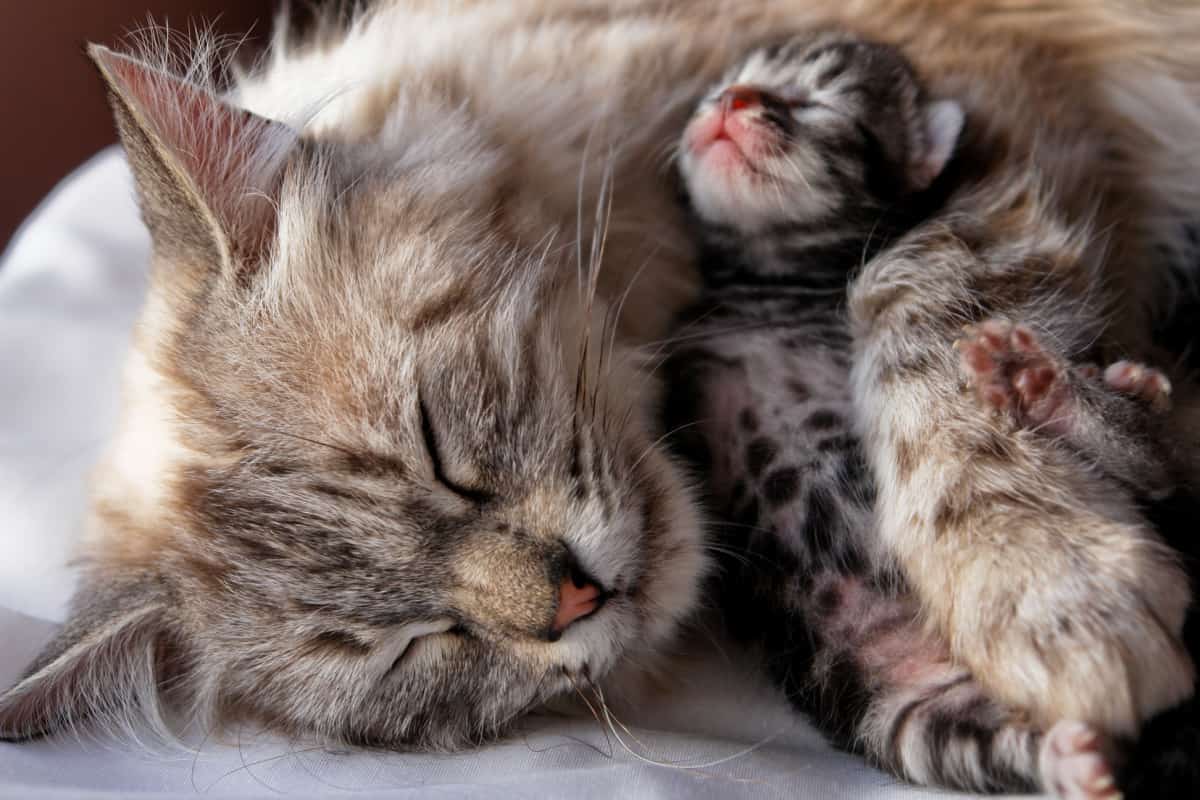
Responsible Feline Parenting: A Final Note
Our exploration of feline reproduction underscores the wonders of nature and the responsibilities of cat ownership.
From understanding the signs of heat to recognizing pregnancy and providing for newborn kittens, cat parenting is both rewarding and challenging.
While welcoming kittens into your home can be exciting, it's crucial to remember the responsibility that comes with it. Ensure they receive appropriate care, nutrition, and veterinary check-ups for a healthy start.
Unless you're a professional breeder, it's highly advisable to spay your cat at 4-6 months of age. This not only prevents unwanted pregnancies but also has potential health benefits for your cat.
Always consult with your vet for advice tailored to your pet's specific needs.
As we conclude this journey into feline reproduction, remember that responsible pet parenting goes beyond knowledge of the reproductive cycle.
It involves understanding their needs, prioritizing their well-being, and making informed decisions for their health.
Lastly, every cat deserves a loving home. If possible, consider helping a stray or rescue cat. Doing so ensures that more cats have the chance at a happy, healthy life.
SIGN UP FOR THECATSITE'S EMAIL UPDATES >
Comments? Leave them using the comment section below. Questions? Please use the cat forums for those!
For more feline pregnancy information, read our collection of articles below. Get ready to be captivated by the world of cats' maternity!
Pregnant Cat? What To Prepare For The Birth
How To Save Your Cat From These 16 Life-Threatening Pregnancy Risks
Note: We may get commissions for purchases made through links on this page.


